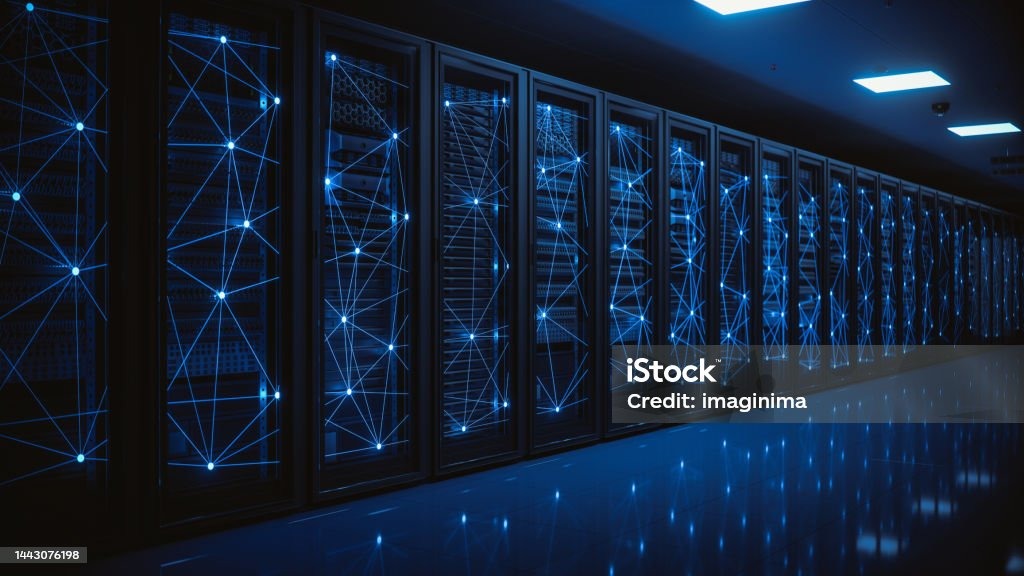Data Centers versus Virtual Machines: Understanding Their Functionality

In the realm of computing, data centers and virtual machines (VMs) play crucial roles in storing, processing, and managing vast amounts of data. While both serve essential purposes, they differ significantly in their architecture and operational principles. This guide delves into the intricacies of data centers and virtual machines, providing a clear understanding of their functionalities and distinctions.
Data Centers: The Physical Foundation of IT Infrastructure
A data center, often referred to as a server farm, is a centralized repository for IT equipment, including servers, storage devices, networking components, and cooling systems. These facilities are meticulously designed to house and maintain the hardware that powers various applications and services.
Key Components of a Data Center:
-
Servers: The workhorses of a data center, servers are powerful computers responsible for executing programs, storing data, and facilitating network communication.
-
Storage Devices: Data centers employ a variety of storage solutions, including hard drives, solid-state drives, and cloud storage, to safeguard and manage vast amounts of information.
-
Networking Components: Networking equipment, such as routers, switches, and firewalls, ensures seamless connectivity within the data center and enables communication with external networks.
-
Cooling Systems: To maintain optimal operating temperatures, data centers utilize sophisticated cooling systems, including air conditioning units and liquid cooling systems, to prevent overheating of sensitive hardware.
Virtual Machines: Emulating Dedicated Computers
A virtual machine (VM) is a software emulation of a dedicated computer system that runs within a physical host machine. VMs provide an isolated and self-contained environment for running operating systems, applications, and user data.
Characteristics of Virtual Machines:
-
Resource Sharing: VMs share the physical resources of the host machine, such as CPU, memory, and storage, allowing for efficient utilization of hardware capabilities.
-
Portability: VMs can be easily transferred or copied between different physical machines, offering flexibility and deployment convenience.
-
Isolation: VMs operate independently, providing a secure and isolated environment for running applications without affecting other VMs or the host system.
-
Scalability: VMs can be readily scaled up or down to meet fluctuating computing demands, ensuring resource optimization.
Data Centers vs. Virtual Machines: A Comparative Analysis
| Feature | Data Centers | Virtual Machines |
|---|---|---|
| Physical Infrastructure | Physical hardware components, including servers, storage, and networking | Software-based emulation of dedicated computers within a host machine |
| Scalability | Scaling typically involves adding or removing physical servers | Scaling involves adding or removing virtual machines |
| Cost | Higher upfront investment in hardware and facilities | Lower upfront costs, but ongoing licensing fees for virtualization software |
| Security | Physical security measures to protect hardware and data | Security relies on host machine security and VM isolation |
| Maintenance | Requires regular maintenance of physical hardware | Software updates and maintenance for virtualization software |
Choosing Between Data Centers and Virtual Machines
The decision between data centers and virtual machines depends on specific business needs and IT requirements.
Data centers are suitable for:
- Organizations with large-scale computing demands
- Businesses requiring high levels of security and control over physical infrastructure
- Applications that demand dedicated hardware resources
Virtual machines are ideal for:
- Organizations seeking resource efficiency and cost-effectiveness
- Businesses requiring rapid deployment and scalability
- Applications that benefit from isolation and portability
Conclusion
Data centers and virtual machines serve as indispensable tools in the modern IT landscape. Data centers provide the physical infrastructure to support critical computing operations, while virtual machines offer flexibility, scalability, and resource optimization. Understanding the strengths and limitations of each approach empowers businesses to make informed decisions that align with their unique IT requirements.
We hope this guide has been helpful. If you have any questions, please feel free to leave a comment below.
